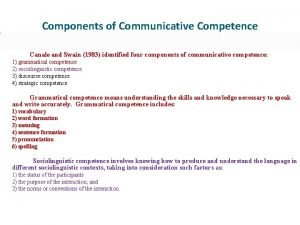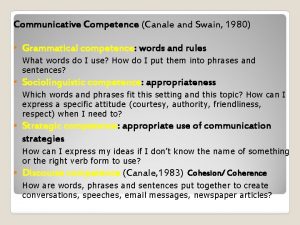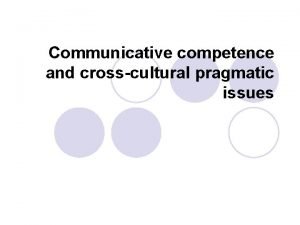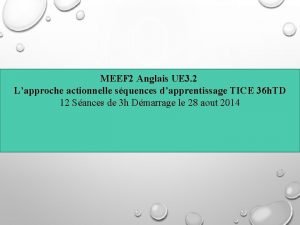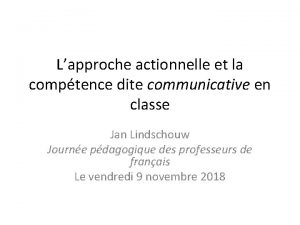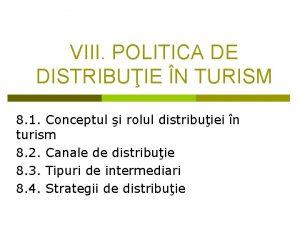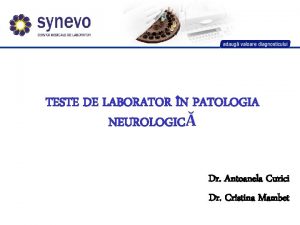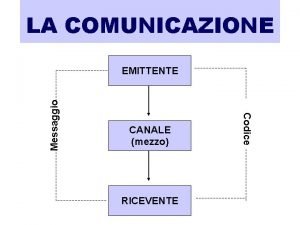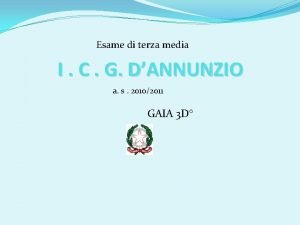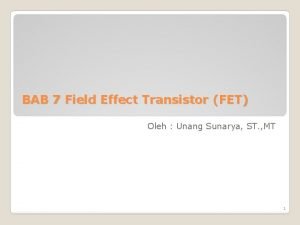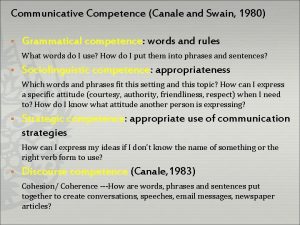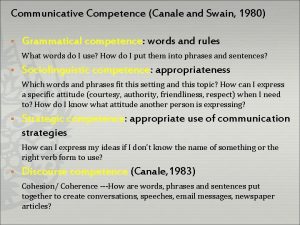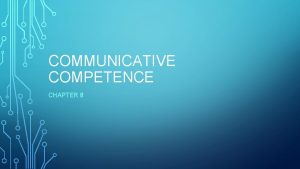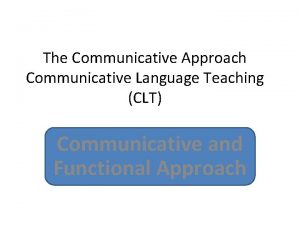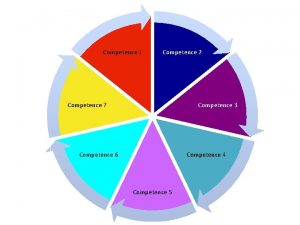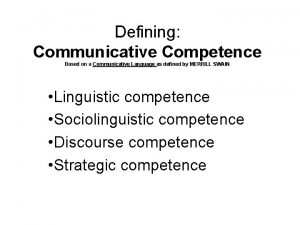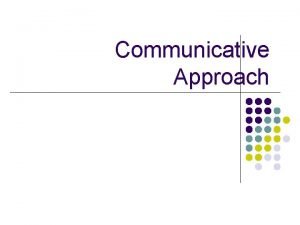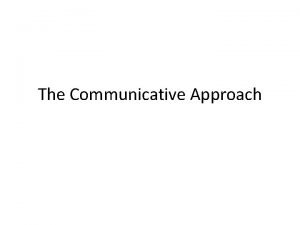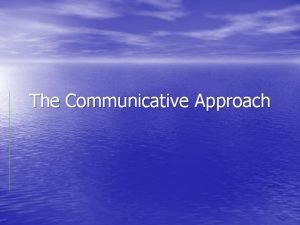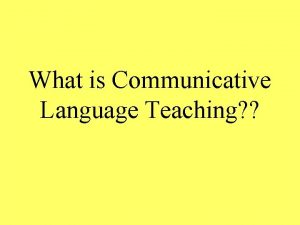Chapter 8 Communicative competence Communicative Competence Canale and

















- Slides: 17

Chapter 8 Communicative competence

Communicative Competence (Canale and Swain, 1980) Ø Grammatical competence: competence words and rules What words do I use? How do I put them into phrases and sentences? Ø Sociolinguistic competence: competence appropriateness Which words and phrases fit this setting and this topic? How can I express a specific attitude (courtesy, authority, friendliness, respect) when I need to? How do I know what attitude another person is expressing? ØStrategic competence: competence appropriate use of communication strategies How can I express my ideas if I don’t know the name of something or the right verb form to use? Ø Discourse competence (Canale, 1983) Cohesion/ Coherence ---How are words, phrases and sentences put together to create conversations, speeches, email messages, newspaper articles?

Q: Models of communicative competence (p. 210)

Q: Explain language forms and functions (p. 211, 214)

Q: A speech act ØAn act that a speaker performs when making an utterance (p. 212)

Q: Provide examples of locutionary meaning, illocutionary force, and perlocutionary force (p. 212)

Q: What does social interaction entail? (p. 216)

Register : a variety of a language used for a particular purpose or in a particular social setting To your brother: What's up? It's awesome that you came to visit! To the President: Good morning, Mr. President. We appreciate your visit.

Q: Pragmatic competence is the ability to use language effectively in a contextually appropriate fashion. Why is the pragmatic competence important? (p. 225)

Nonverbal communication Ø Gestures, Posture (Kinesics) Ø Touch (Haptic communication) Ø Facial expressions Ø Eye contact Ø Paralanguage voice quality, emotion, speaking style, and prosodic features (tone, pitch, rhythm, intonation, and accent)

Five functions of nonverbal bodily behavior in communication Ø Express emotions Ø Express interpersonal attitudes Ø To accompany speech in managing the cues of interaction between speakers and listeners Ø Self-presentation of one’s personality Ø Rituals (greetings)

Communicative Language Teaching (p. 236)

Common misconceptions concerning the meaning of CLT ü not teaching grammar, ü teaching only speaking, ü expecting too much from teachers ü Fluency at the expense of accuracy

In an ideal communicative language teaching… § Classroom goals are focused on communicative competence. all of the components of § Language techniques are designed to engage learners in the pragmatic, authentic, functional use of language for meaningful purposes. § Fluency and accuracy are seen as complementary principles underlying communicative techniques. § Students ultimately have to use the language, productively and receptively (Brown, 1994, p. 245)

Q: Task-Based Language Teaching (p. 237)

Language learning is believed to depend on immersing students not merely in “comprehensible input” but in tasks that require them to negotiate meaning and engage in naturalistic and meaningful communication

Ø The focus is on process rather than product. Ø Basic elements are purposeful activities and tasks that emphasize communication and meaning. Ø Learners learn language by interacting communicatively and purposefully while engaged in the activities and tasks. Ø Activities and tasks can be either: �those that learners might need to achieve in real life: �those that have a pedagogical purpose specific to the classroom. Ø Activities and tasks of a task-based syllabus are sequenced according to difficulty. Ø The difficulty of a task depends on a range of factors including the previous experience of the learner, the complexity of the task, the language required to undertake the task, and the degree of support available.
 Components of communicative competence by canale and swain
Components of communicative competence by canale and swain Components of communicative competence by canale and swain
Components of communicative competence by canale and swain Communicative competence
Communicative competence Approche actionnelle anglais
Approche actionnelle anglais La compétence communicative
La compétence communicative Turistul
Turistul Anticorpi anti vgkc
Anticorpi anti vgkc Structura macroscopica a lemnului
Structura macroscopica a lemnului Regioni addominali
Regioni addominali Emittente ricevente canale codice
Emittente ricevente canale codice Canale di suez tesina terza media
Canale di suez tesina terza media Canal direct marketing
Canal direct marketing Nicolette canale
Nicolette canale Simbol jfet kanal n
Simbol jfet kanal n Canale giovanni
Canale giovanni Filum pteridophyta
Filum pteridophyta Sudafrica posizione
Sudafrica posizione Promovarea ppc
Promovarea ppc
